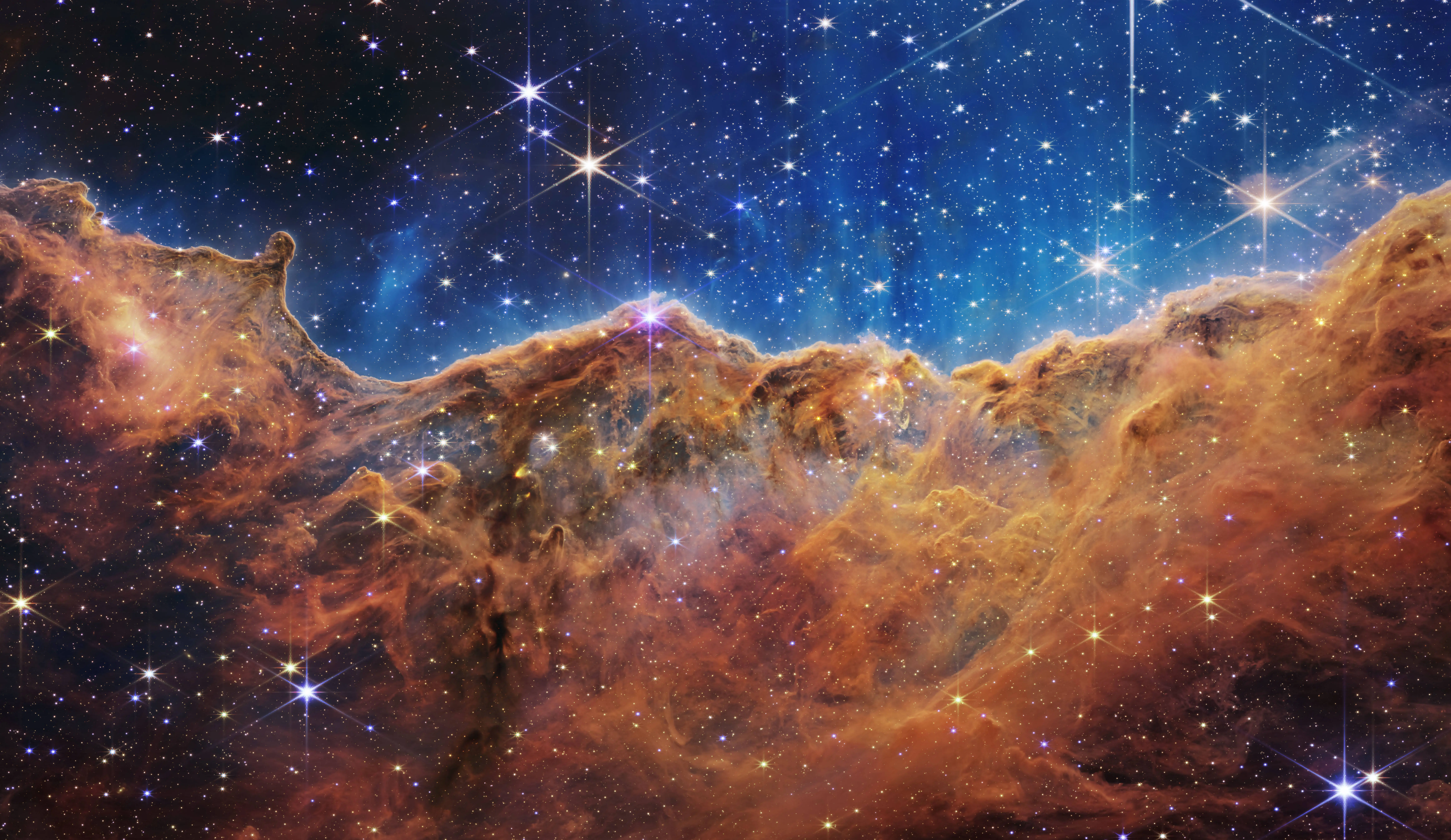New study reveals that the first stars formed in a universe that was already pre-heated
-
 IN SPACE - JULY 12: In this handout photo provided by NASA, a landscape of mountains and valleys speckled with glittering stars is actually the edge of a nearby, young, star-forming region called NGC 3324 in the Carina Nebula, on July 12, 2022 in space. Captured in infrared light by NASA's new James Webb Space Telescope, this image reveals for the first time previously invisible areas of star birth. (Photo by NASA, ESA, CSA, and STScI via Getty Images)
IN SPACE - JULY 12: In this handout photo provided by NASA, a landscape of mountains and valleys speckled with glittering stars is actually the edge of a nearby, young, star-forming region called NGC 3324 in the Carina Nebula, on July 12, 2022 in space. Captured in infrared light by NASA's new James Webb Space Telescope, this image reveals for the first time previously invisible areas of star birth. (Photo by NASA, ESA, CSA, and STScI via Getty Images)A recent scientific study has suggested that the first stars in the universe formed in conditions very different from what researchers had long believed. Instead of forming in a cold and quiet environment, the new findings point to a universe that was already pre-heated before these early stars appeared.
Findings of the study
The study, carried out by an international team of researchers, indicates that the early universe may have been warmer than previously estimated. This warmth, or pre-heated state, could have played a role in how and when the first stars were able to form.
Traditionally, scientists thought the earliest stars — sometimes called “Population III stars” — emerged out of cold hydrogen gas clouds that cooled enough to collapse under gravity. However, the study suggests that additional energy may have already been present, raising the temperature of the gas before these clouds collapsed.
Why this matters
The idea of a pre-heated universe challenges earlier assumptions about the timeline of cosmic evolution. If the first stars formed in warmer conditions, it means the processes that shaped them, including their size, brightness, and lifespan, may have unfolded differently.
Researchers note that such conditions could affect how the first galaxies were built, how heavy elements were spread across space, and how the universe transitioned into later stages of development.
How scientists studied this
The study used computer simulations and models based on cosmic background radiation, the faint afterglow left over from the Big Bang. By examining how this radiation and other signals interacted with matter in the early universe, researchers created scenarios that pointed toward preheating effects.
In particular, the findings suggest that energy from dark matter interactions or other cosmic processes may have warmed the hydrogen clouds before the first stars ignited. While this remains an area of ongoing research, the models provide a new perspective on the environment in which the earliest stars were born.
What comes next
The findings emphasize future space missions and telescopes, which could offer further insight into the first stars of the universe. Devices such as the James Webb Space Telescope (JWST) and other future-generation observatories will likely take more data of far-off galaxies and star systems that are billions of years old.
These findings would potentially serve to verify that the pre-heating hypothesis holds true and provide more information on the specific conditions under which the first stars were created.
Researchers stress that although the new research provides an important new area to explore, additional study is required before firm conclusions may be drawn.
The finding is part of a bigger project to know how the universe began and what objects are found in the universe. The initial stars were instrumental in creating the universe by illuminating, heating, and creating the first heavy elements that eventually enabled planets and life to exist.
By examining when and how they consolidated, researchers look forward to better reconstructing the history of the universe and placing in context how galaxies, stars, and solar systems like our own eventually formed.
TOPICS: NASA
- 3I/ATLAS shows methanol production increasing with proximity to Sun
- NASA’s MAVEN spacecraft detects signs of hydrogen coming from comet 3I/Atlas as scientists study the interstellar visitor closely
- NASA explains why the new HiRISE image of interstellar comet 3I/Atlas looks fuzzy while amateur astronomers capture clearer views
- Avi Loeb questions NASA’s 3I/Atlas press conference as he says “obvious facts” may be hiding bigger truth